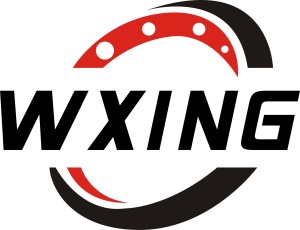PRODUCT
Nano fluid technology and its application
by:Waxing
2020-11-15
2020 - nanometer fluid technology and its application
01 -
01 25 1995, the concept of nanofluids, the Argonne national laboratory, Choi and others for the first time put forward the concept of nanofluids.
Nano fluid is a kind of a small amount of nanoparticles (
Particle size of particles smaller than 100 nm)
According to certain proportion and method added to the liquid medium (
Base)
In the formation of stable suspension.
Nano fluid in the energy industry, chemical industry, automobile, construction, microelectronics and other fields has huge potential application prospects, and become materials, physics, chemistry, heat transfer, and many other fields of research hot spots.
The type of nanoparticles: metal (
Au, Ag, Cu, Sn, Ni, etc. )
, metal oxide (
Al2O3, CuO and ZnO, Fe3O4, etc. )
, non-metallic inorganic compounds (
SiC, SiO2, MoS2, ZrO2, etc. )
And organic compounds (
Carbon nanotubes, graphene, fullerenes, etc. )
。
Base includes: water, ethylene glycol, acetone, olefins, grease, oil, heat conduction oil, transformer oil, etc.
02 nanofluids preparation of single step and two step 2 kinds.
Single gait refers to the preparation of nanoparticles and scatter particles directly into the base fluid, the preparation of nano particles and nano fluid at the same time to complete.
Single footwork no nanoparticles drying, storage, transportation, and redispersion process, it is not easy for nanoparticles, can directly obtain dispersion stability of the nanofluids.
The preparation method is complex, high cost, not suitable for mass production.
Two-step refers to the preparation of nano powder first, scattered dry again after the base fluid.
Meets the need of industrial production, but still exist in practical application of nanoparticles in the base fluid dispersion stability problem, since nanoparticles are easy to gather, placed for a long time after the aggregation of nanoparticles will precipitate from the base.
03 main research direction and application of the nanofluid heat transfer of nanofluids high coefficient of thermal conductivity to strengthen the base of the heat transfer performance, in order to improve energy efficiency, reducing energy consumption provides a new solution.
Many of the early literature confirmed nano fluid in the coolant and the effective function of engine oil, for example: air heat exchange system, automotive engine cooling system, solar distillation system, micro pipe radiator, etc.
Mass transfer research focused on strengthening gas-liquid mass transfer, compared with general gas-liquid mass transfer, nanofluids has larger specific surface area and surface activity, can greatly increases the contact area of the liquid in the atmosphere, improve the absorption rate.
Mainly used in environmental protection and natural gas storage.
Less friction and wear the nanoparticles into the lubricating oil in the formation of the nano fluid, can improve the tribological properties of lubricating oil.
Nanoparticles near the contact zone ACTS as a tiny rolling bearing, thus reducing the contact area and reduce the friction;
Nanoparticles adsorption film formation boundaries, separated will contact surface, thus reduce the wear and tear;
Nano particles and nano fluid can inhibit bruises and scratches caused by injury.
To increase the use of the machine efficiency, prolong the service life of machine parts.
Further research direction is: nano fluid controllable microstructure research;
Under the long-term stability of the nanofluids, the practical application of stability and countless after thermal cycling stability;
Nano fluid theory system needs further experimental study.
Impact on the contact fatigue life of rolling contact fatigue (
RCF)
Failure is including rolling bearings, gears, CAM rotor friction mechanical parts failure of the key factors, such as when the alternating stress exceeds rolling body plastic deformation stress occurs when the required minimum RCF.
RCF in The Times of discontinuous surface structure and microscopic cracks extend to the surface, forming surface spalling or pitting.
RCF life depends on the type of lubricant base oil and additives used.
Nano fluid under the appropriate additive content can significantly improve the fatigue life of contact lubrication.
(
Source: the journal bearing)
Custom message































































































